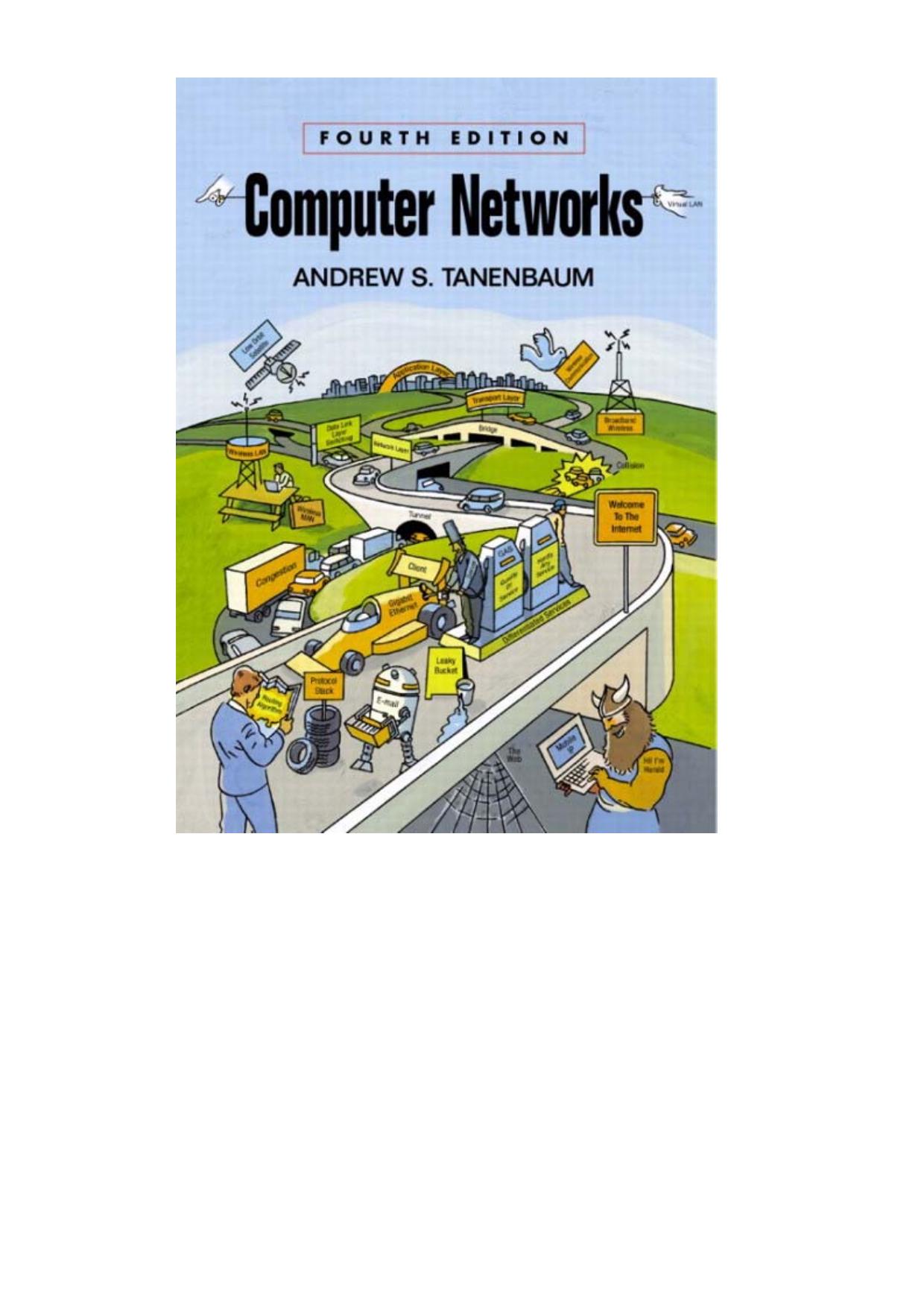Computer Networks by Andrew S. Tanenbaum

Author:Andrew S. Tanenbaum [Tanenbaum, Andrew S.]
Language: eng
Format: epub, pdf
Tags: Computers, General, Networking, Electronic books, Computer networks
ISBN: 9780130661029
Publisher: Prentice Hall PTR
Published: 2003-03-14T23:00:00+00:00
Figure 5-50. (a) Transparent fragmentation. (b) Nontransparent fragmentation.
Transparent fragmentation is straightforward but has some problems. For one thing, the exit gateway must know when it has received all the pieces, so either a count field or an ''end of packet'' bit must be provided. For another thing, all packets must exit via the same gateway. By not allowing some fragments to follow one route to the ultimate destination and other fragments a disjoint route, some performance may be lost. A last problem is the overhead required to repeatedly reassemble and then refragment a large packet passing through a series of small-packet networks. ATM requires transparent fragmentation.
The other fragmentation strategy is to refrain from recombining fragments at any intermediate gateways. Once a packet has been fragmented, each fragment is treated as though it were an original packet. All fragments are passed through the exit gateway (or gateways), as shown in Fig. 5-50(b). Recombination occurs only at the destination host. IP works this way.
Nontransparent fragmentation also has some problems. For example, it requires every host to be able to do reassembly. Yet another problem is that when a large packet is fragmented, the total overhead increases because each fragment must have a header. Whereas in the first method this overhead disappears as soon as the small-packet network is exited, in this method the overhead remains for the rest of the journey. An advantage of nontransparent fragmentation, however, is that multiple exit gateways can now be used and higher performance can be achieved. Of course, if the concatenated virtual-circuit model is being used, this advantage is of no use.
When a packet is fragmented, the fragments must be numbered in such a way that the original data stream can be reconstructed. One way of numbering the fragments is to use a tree. If packet 0 must be split up, the pieces are called 0.0, 0.1, 0.2, etc. If these fragments themselves must be fragmented later on, the pieces are numbered 0.0.0, 0.0.1, 0.0.2, . . . , 0.1.0, 0.1.1, 0.1.2, etc. If enough fields have been reserved in the header for the worst case and no duplicates are generated anywhere, this scheme is sufficient to ensure that all the pieces can be correctly reassembled at the destination, no matter what order they arrive in.
However, if even one network loses or discards packets, end-to-end retransmissions are needed, with unfortunate effects for the numbering system. Suppose that a 1024-bit packet is initially fragmented into four equal-sized fragments, 0.0, 0.1, 0.2, and 0.3. Fragment 0.1 is lost, but the other parts arrive at the destination. Eventually, the source times out and retransmits the original packet again. Only this time Murphy's law strikes and the route taken passes through a network with a 512-bit limit, so two fragments are generated. When the new fragment 0.1 arrives at the destination, the receiver will think that all four pieces are now accounted for and reconstruct the packet incorrectly.
A completely different (and better) numbering system is for the internetwork protocol to
Download
This site does not store any files on its server. We only index and link to content provided by other sites. Please contact the content providers to delete copyright contents if any and email us, we'll remove relevant links or contents immediately.
Grails in Action by Glen Smith Peter Ledbrook(9205)
Sass and Compass in Action by Wynn Netherland Nathan Weizenbaum Chris Eppstein Brandon Mathis(8840)
Azure Containers Explained by Wesley Haakman & Richard Hooper(7445)
Configuring Windows Server Hybrid Advanced Services Exam Ref AZ-801 by Chris Gill(7437)
Kotlin in Action by Dmitry Jemerov(7324)
Running Windows Containers on AWS by Marcio Morales(6989)
Microsoft 365 Identity and Services Exam Guide MS-100 by Aaron Guilmette(5403)
Microsoft Cybersecurity Architect Exam Ref SC-100 by Dwayne Natwick(5215)
Combating Crime on the Dark Web by Nearchos Nearchou(4982)
The Ruby Workshop by Akshat Paul Peter Philips Dániel Szabó and Cheyne Wallace(4671)
Management Strategies for the Cloud Revolution: How Cloud Computing Is Transforming Business and Why You Can't Afford to Be Left Behind by Charles Babcock(4527)
Python for Security and Networking - Third Edition by José Manuel Ortega(4234)
The Age of Surveillance Capitalism by Shoshana Zuboff(4210)
Learn Wireshark by Lisa Bock(4125)
The Ultimate Docker Container Book by Schenker Gabriel N.;(3889)
Learn Windows PowerShell in a Month of Lunches by Don Jones(3683)
DevSecOps in Practice with VMware Tanzu by Parth Pandit & Robert Hardt(3570)
Windows Ransomware Detection and Protection by Marius Sandbu(3544)
Blockchain Basics by Daniel Drescher(3507)
